5 ways to create a more customer-centric business

Customer obsession is not a new phenomenon.
In 2020, a gradual shift became a sudden leap. Overnight, the pandemic changed the way businesses interact with consumers and reoriented their priorities.
The transformed global environment has heightened the need for companies to improve their responsiveness to external changes by becoming truly customer-centric.
The first step to becoming customer-centric is the recognition that the customer should be at the heart of all business activity. The second step, making it happen, is far harder to attain. While many businesses have the right intentions and strategy, executing plans effectively is an altogether different challenge.
Businesses understand the importance of customer-centricity…
Gate One’s customer-centricity report reveals a consensus across all sectors that making customers a top priority is an integral element of a successful business strategy.
Companies that focus on understanding customers’ unique needs and providing a seamless experience are on the right track toward building a solid base of repeat customers. Paying closer attention to the voice of the customer also helps businesses identify the areas where they need to develop the products or services they offer.
The research finds that there is a divergence in what business leaders and consumers understand to be their expectations and desires. This mismatch between the C-suite and customer presents a barrier to businesses truly becoming customer-centric. The report identifies four key themes that are valuable areas of exploration in the development of the customer strategy.
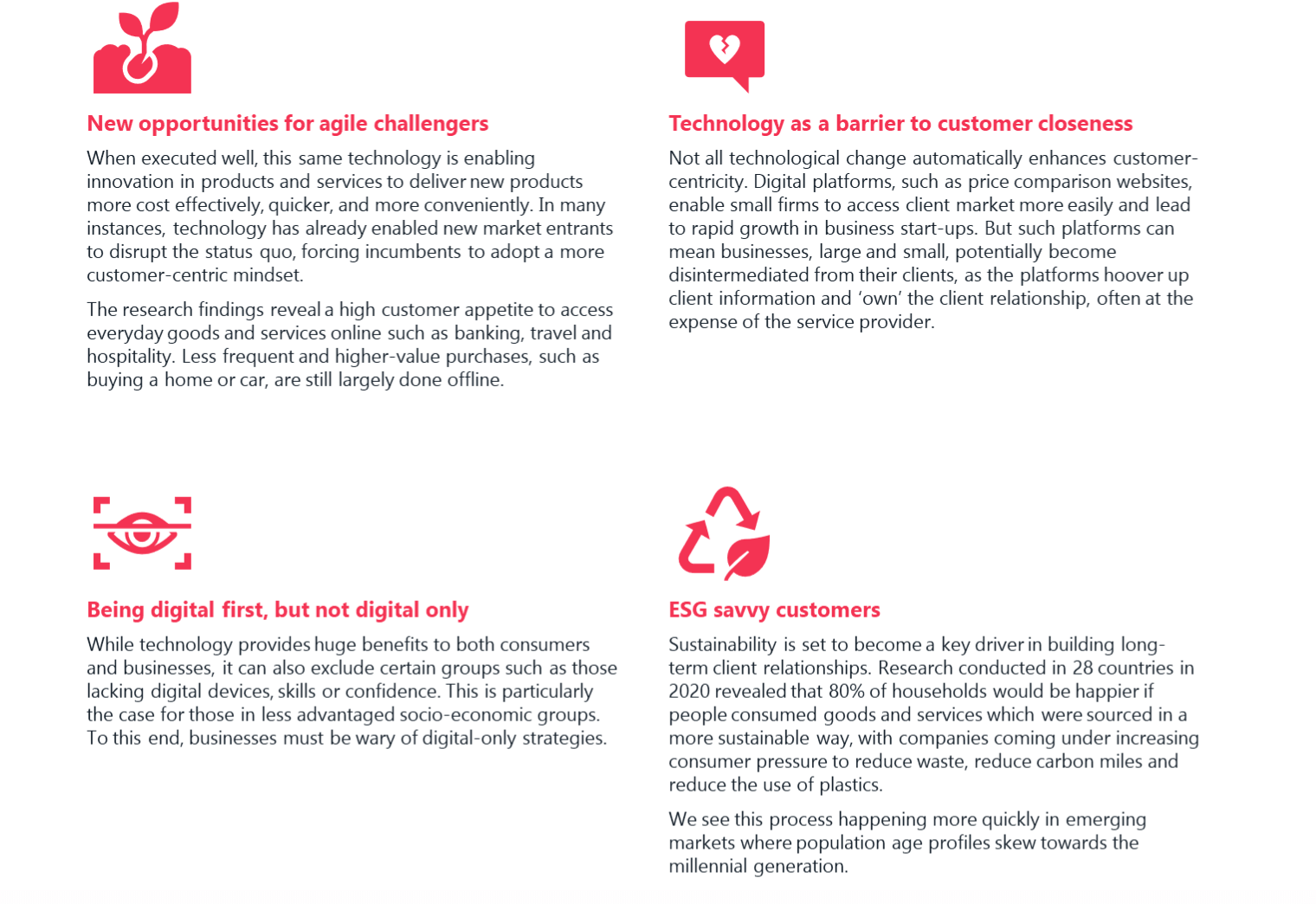
Businesses need to transform internally to become truly customer-centric.
Achieving true customer-centricity may seem like a daunting challenge. However, as experts in the strategy and delivery of complex and significant business and digital transformations, Gate One’s framework outlines the key steps that need to be taken to successfully deliver a customer-centric business.
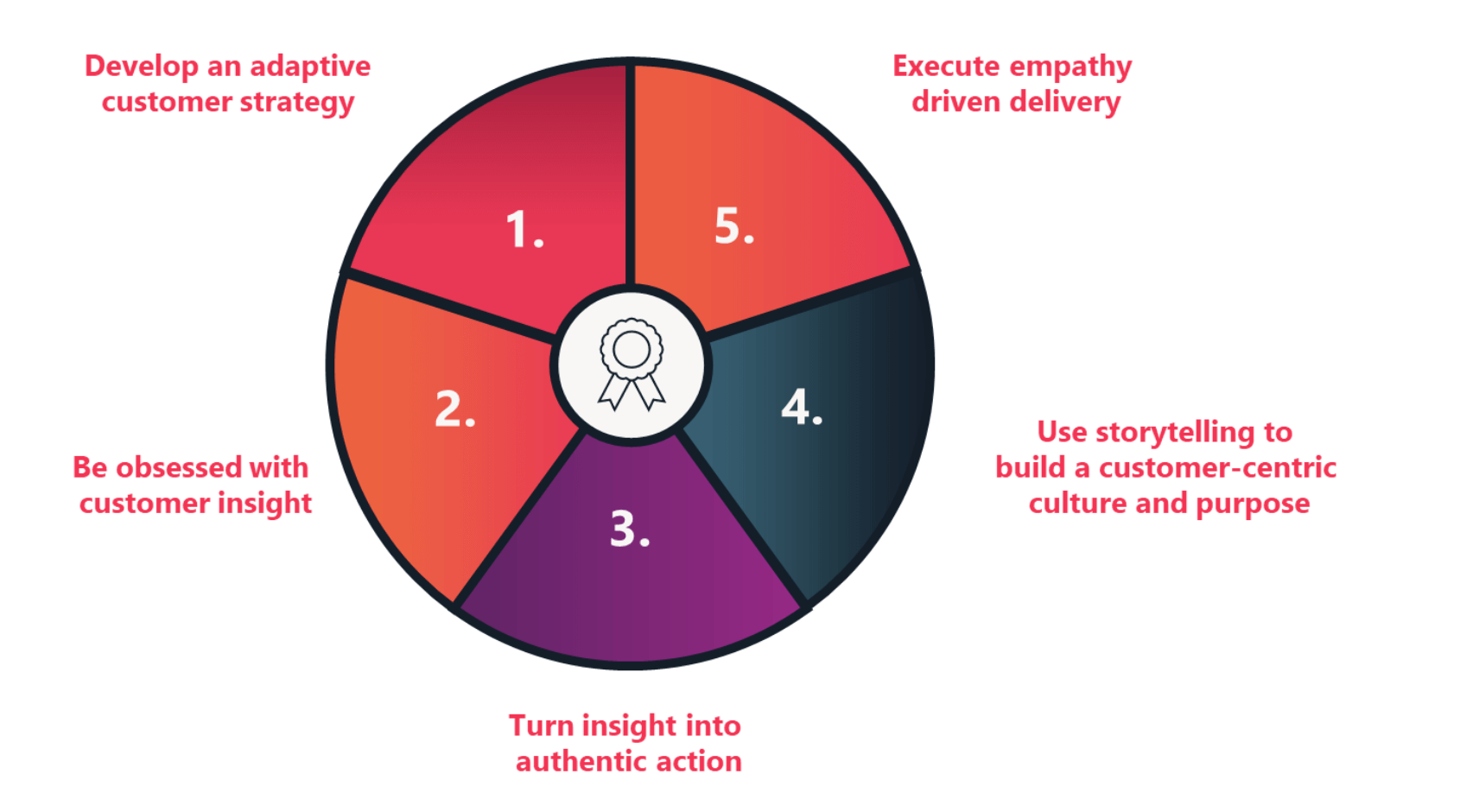
Develop an adaptive customer strategy
An adaptive customer strategy requires being aware of the wider business strategy and being able to align that with enhanced customer outcomes.
As a product manager, you can not develop an adaptive customer strategy alone. This will require cross-functional teams to work together, including brand, supply chain, product design, distribution strategy, sales and marketing, and customer services teams.
Tip: Adaptive customer strategies will often require a board-level sponsor to coordinate activities.
Be obsessed with customer insight
Understanding where the business is serving customers well and where it needs to improve requires data, and the ability to collate, analyze, and interpret information.
Measuring customer experience has traditionally involved understanding customer satisfaction net promoter scores (NPS). Increasingly, businesses are looking across the end-to-end experience and all key channel interactions, from the physical to the digital and in areas such as the social media ecosystem.
Social media enables brands to gain deeper insights into their customers. As content creators, customers can provide a much richer picture of their attitudes, lifestyles, and consumption patterns. This provides vital intelligence for businesses when designing products and services and delivering more contextual, personalized experiences.
Tip: With the right product management system and integrations, you can create a repository of user insights from the channels that customers are using to interact with you across the end-to-end experience. This can be integrated though:
- Support platforms like Zendesk
- Internal communication platforms like Slack or Microsoft Teams
- Customer conversation and messaging tools like Intercom, Gong, email, and social media
- Customer success software like Gainsight
- CRM software like Salesforce
Productboard’s Insights capability can capture all of this and support you in making informed decisions about where you need to make changes to your products — all based upon what customers are telling you
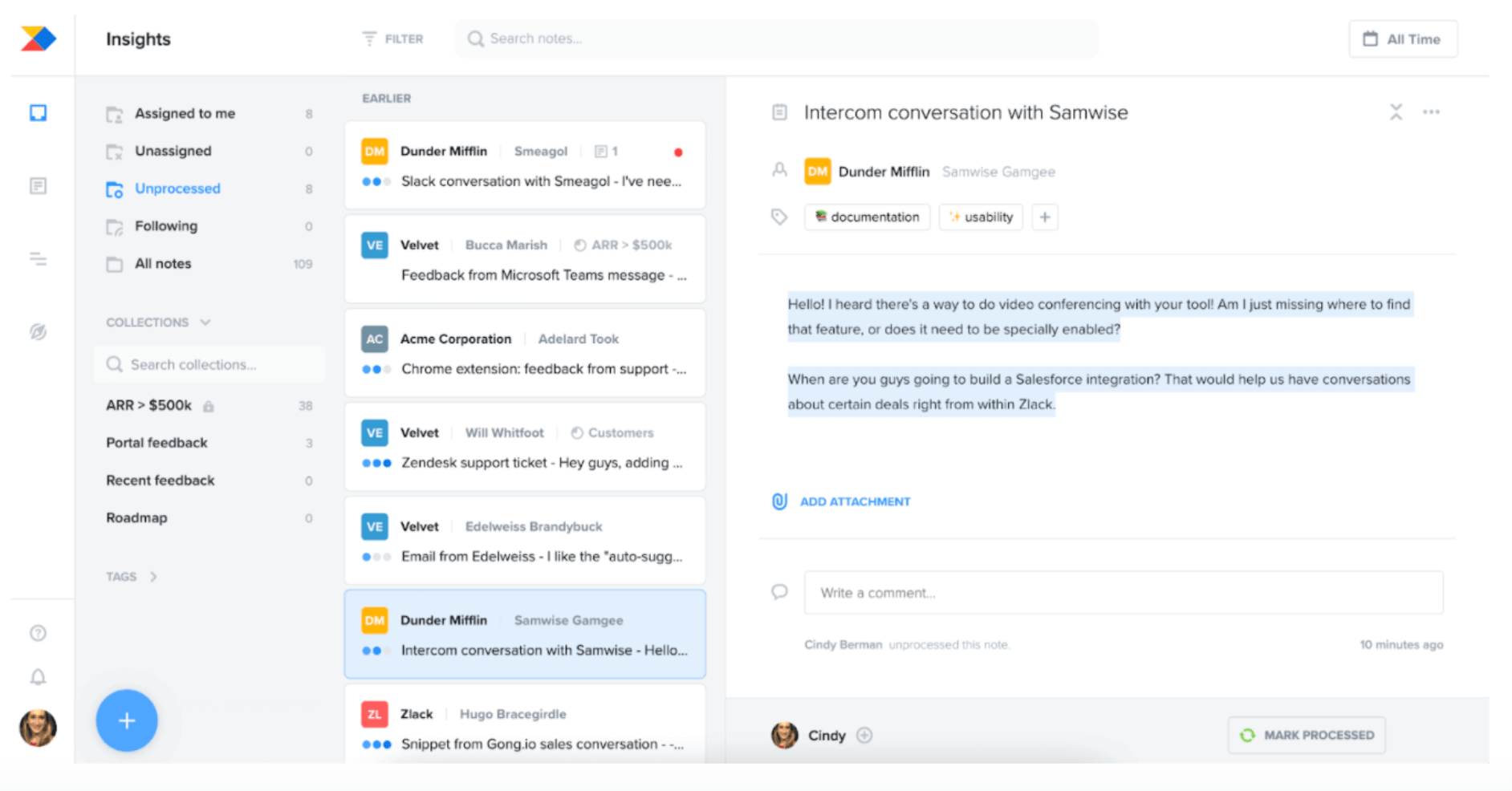
Turn insights into authentic actions
Being able to collate and interpret data is only part of the picture. Companies must turn insights into relatable communications and actions to connect with customers and change or reinforce behaviours.
Relatable communication is essential for those in customer-facing roles. Sales, success, and support teams need to be highly attuned to understanding customers’ problems and communicating how best to solve these problems in real time.
Turning insight into authentic action requires taking an active role in delivering change based on customer feedback.
Tip: One of the ways to turn insight into action is through getting your customers involved in the product planning process.
Productboard’s Portal provides an interface for customers to contribute with their user community and ensure that changes are actioned based upon the insights received.
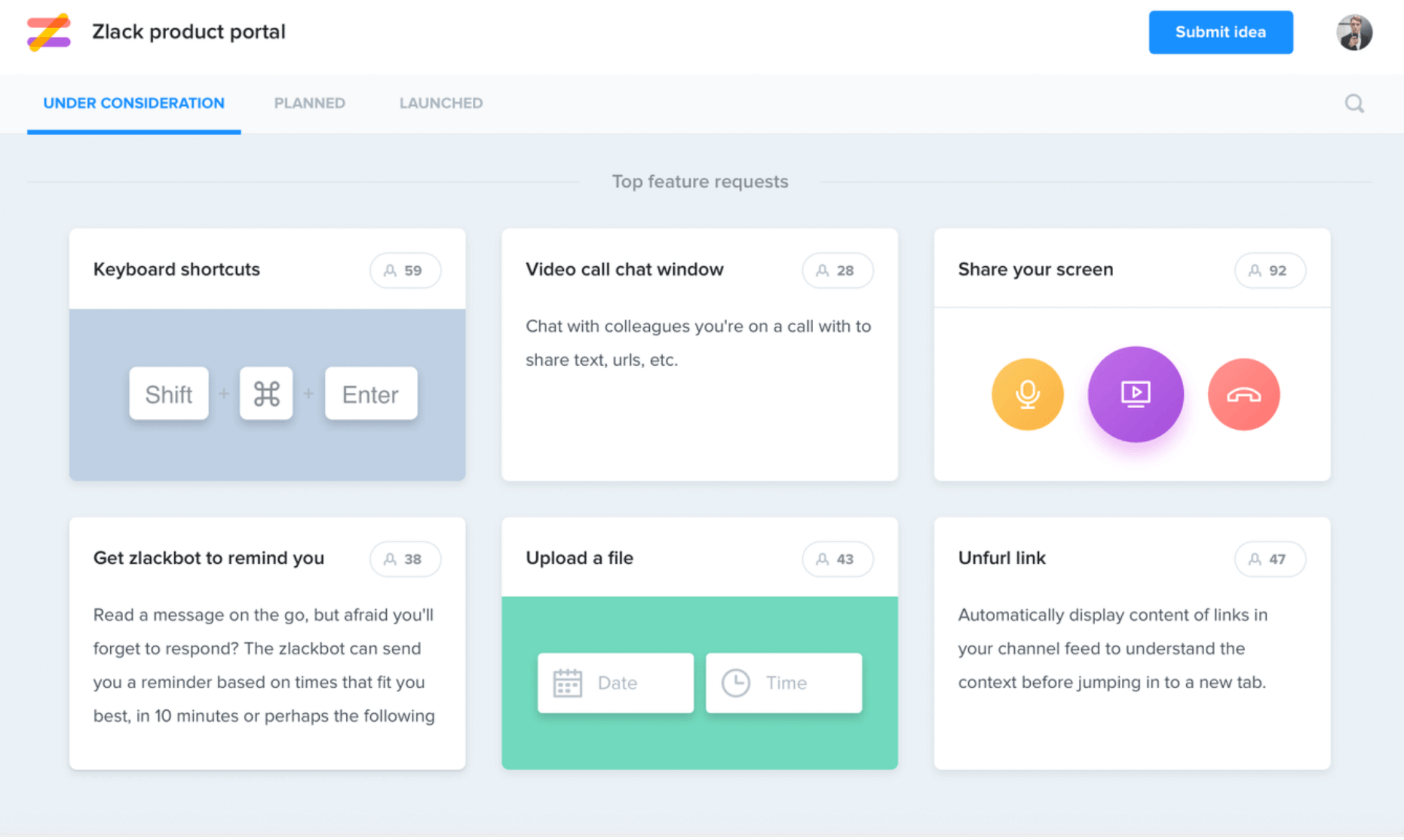
Use storytelling to build a customer-centric culture and purpose
To build deep and sustainable customer relationships, customer-facing teams need to be empowered to deliver on their needs. Developing an empathetic approach helps empower teams to build their skills to listen and respond positively to customer demands.
When thinking about telling compelling and engaging stories we think it important to focus on three core elements:
- The story itself
- It’s appeal and believability
- Continual research, collaboration, and iteration
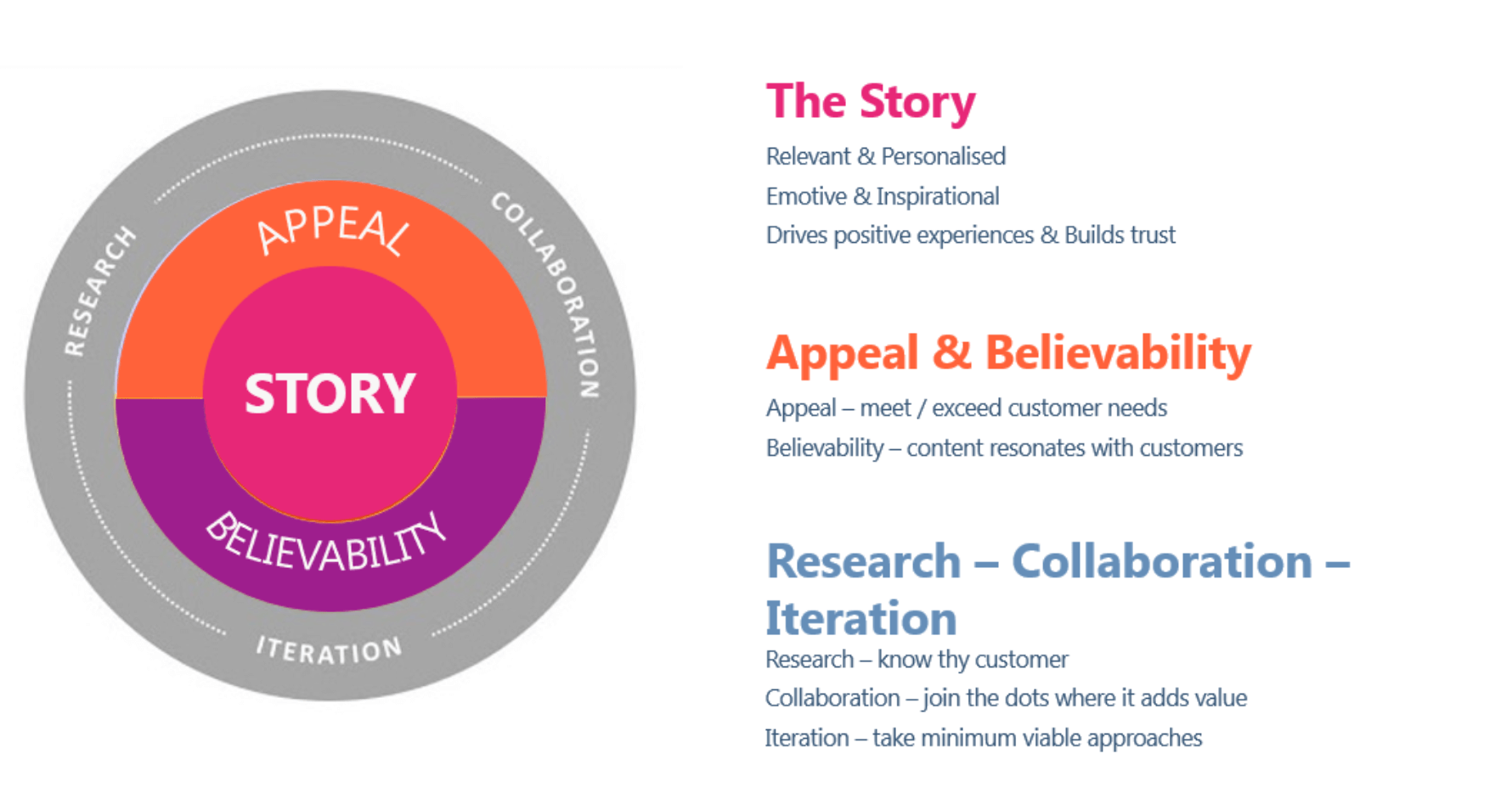
This will enable you and your teams to create compelling narratives to respond to change and customer needs.
Execute empathy-driven delivery
Businesses must be able to adapt to the rapidly changing customer markets. Product managers are challenged to address new channels and respond to evolving customer segments to tap into future growth and needs.
Assembling the right mix of skills to undertake strategic projects — and to devise empathy driven delivery of operational and product solutions — becomes an ever-more important competence.
Businesses must not be slow to adapt. This is one reason why businesses need to get smarter about measuring customer satisfaction by combining appropriate KPIs with customer feedback. Data provides a myriad of new ways to better understand customers and keep them close. This is a big issue for all businesses, particularly those in B2B markets, that often enjoy little or no direct contact with the consumers of their products and services.
As organizations determine their future visions and critical change priorities, the views of senior business decision makers rarely coincide with those of their customers.
Create a more customer-centric business
Overall, the behavior shifts we’re witnessing today are not a blip — they are a much more permanent change in habits. Consequently, there is a need to adjust how we deliver experiences for customers in a sustainable way.
As societies and businesses emerge from the seismic impact of the pandemic, an “experience renaissance” is afoot that is galvanizing companies to push beyond customer experience and truly organize the whole business around the delivery of exceptional experiences.
For more information on Gate One’s report “Keeping Customers Close: Customer-Centricity in a Rapidly Changing World”, please follow this link.




